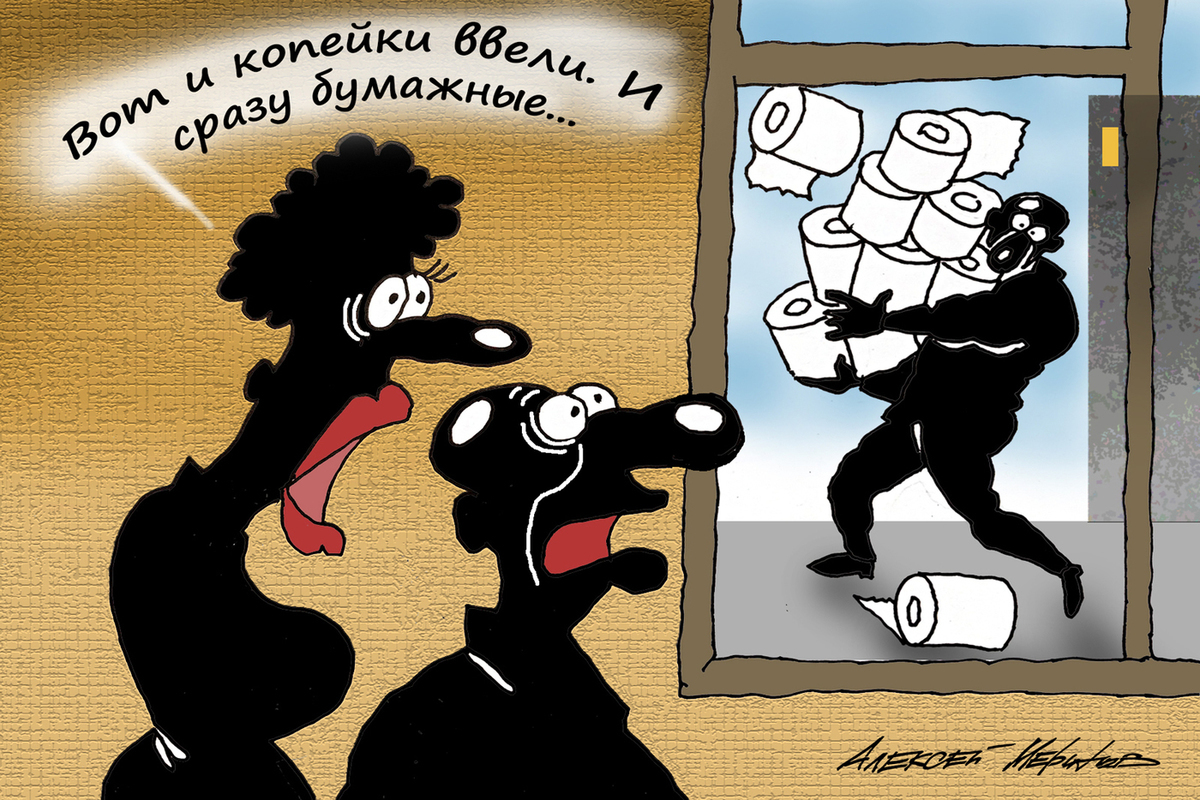The return of five- and ten-ruble banknotes “from the 90s” saw the risk of an impending denomination
[ad_1]

The people remember the “Pavlovian reforms”
Five- and ten-ruble banknotes began to arrive at the cash-collection centers of Moscow from the Moscow region. The official reason for the return of banknotes, which citizens last saw almost a quarter of a century ago, is the rise in metal prices for coinage. However, in social networks, they began to actively draw parallels with other events from the 90s, recalling both monetary reforms with the replacement of some banknotes with others, and the denomination that happened in those years. How justified the fears of the Russians, understood “MK”.
For the first time, information about the “second coming” of small bills appeared last summer. The Bank of Russia decided to resume the issuance of 10-ruble banknotes of the 1997 model, the printing of which was completed in 2013, and also to return five-ruble banknotes, the issuance of which ceased even earlier – in 1998. The return to money from the “dashing 90s” was explained by the rise in price of metal and the emergence of technologies that can reduce the wear and tear of banknotes. So, today banknotes can be varnished, which allows to increase their service life by 30%. And metallic money does not return well into circulation – people simply prefer to keep it at home, which is also confirmed by surveys of retail stores. However, the very fact of the unexpected return of small denominations at a difficult time for Russia from an economic and geopolitical point of view caused various rumors to appear in social networks about a different subtext in the actions of the monetary authorities. Apparently, taught by the bitter experience of numerous financial crises of the past, our citizens are looking for additional hidden meaning in any action of the authorities with money. One of the most popular associations is the possible planning of a future monetary reform. Someone suspects that the authorities allegedly want to abandon high-denomination banknotes (5 thousand rubles), while someone directly sees this as preparation for a denomination. Fears of anxious Russians undertook to dispel a member of the Supervisory Board of the Guild of Financial Analysts and Risk Managers Alexander Razuvaev.
– Why did the regulator decide to put money from the 90s into circulation?
– In fact, everything is simple: the cost of producing coins has increased, while the cost of creating paper banknotes, on the contrary, has decreased. On this basis, the regulator made a choice in favor of a more rational form of money in use and production. Let me remind you that coins are made of alloys: for example, one ruble is created from a copper-nickel alloy, two rubles are steel with galvanized nickel coating, etc. Due to the rise in prices for metals, equipment, additional materials and the work to make them, the production of coins has become less profitable than printing paper banknotes.
– In social networks, in connection with this step of the regulator, they recall the monetary reforms of the 90s, when they started by changing one bill for another during the “Pavlovian reform”, and ended with a denomination. How relevant are these associations?
– They’re false. It has nothing to do with the possible preparation of a denomination. Let’s remember the essence of the monetary reforms of the 90s. In the history of modern Russia, there was only one denomination: on January 1, 1998, the authorities exchanged money in the ratio of 1 to 1000 “old-style” rubles. Before that, in the summer of 1993, there was a reform when the “Soviet” and “post-Soviet” money were canceled, leaving only denominations of the all-Russian uniform format in circulation. And the “Pavlovian reform”, which was also remembered now, consisted in the withdrawal from circulation of the “old-style” money in denominations of 50 and 100 rubles – in the USSR it was the largest denomination for banknotes. It did not achieve its goals and actually undermined the confidence of the people in the government. All of the above reforms have nothing to do with the “second coming” of five- and ten-ruble bills that happened in 2023. They were caused by completely different reasons.
– It turns out that this step of the regulator will not have any impact on the financial market, will it?
– No. Many will not even immediately notice that some new banknotes have appeared in circulation. Now cash is rarely used. Russians have long been actively paying for their purchases with bank cards. Personally, in principle, if you are interested in my opinion, I am extremely positive about the idea of denomination. I think that it should be held in Russia. Imagine, you go into a store, and there a bottle of water is sold for 50 kopecks, good wine – for 10 rubles. This would be a great step for future integration as well. I hope that one day Belarus will switch to the Russian ruble. Maybe someday we will see the Eurasian euro, but that’s another story. And today I advise people to stop emotionally reacting to money market news and look everywhere for non-existent conspiracy theories.
[ad_2]
Source link






